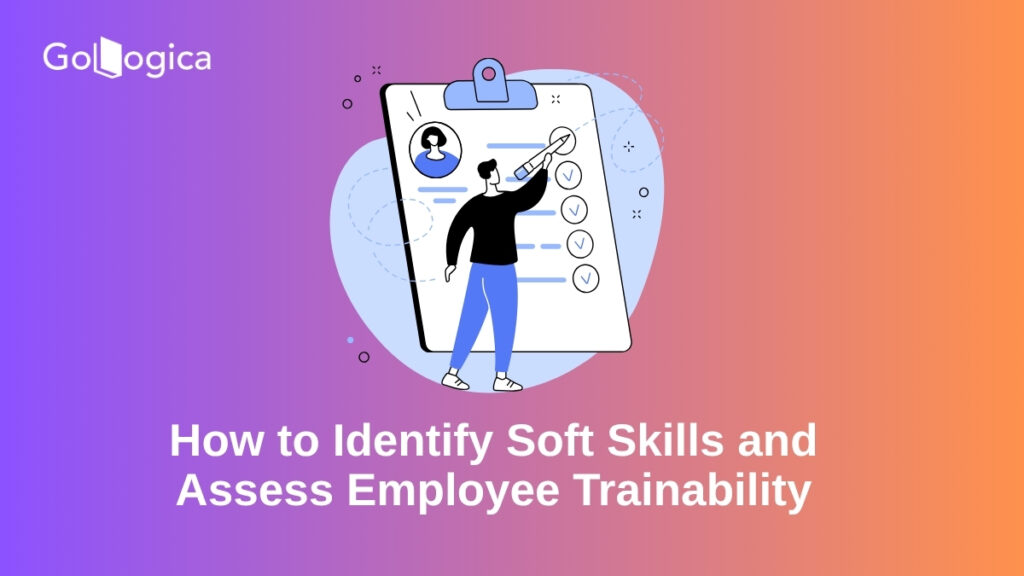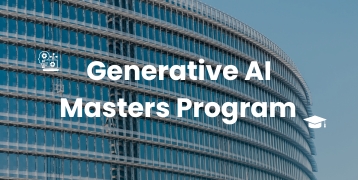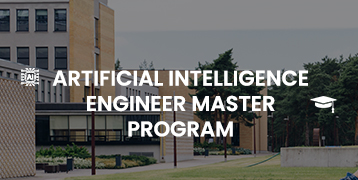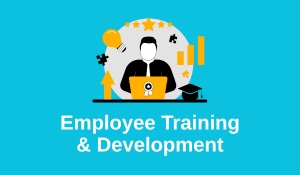
Table of contents:
- Identifying Soft Skills
- Pre-employment tests
- Organised interviews
- Role-playing and simulations
- 360-degree feedback
- Assessment platforms
- Assessing Employee Trainability
- Post-training assessments
- Regular performance reviews
- Peer reviews
- Work sample assessments
- Skills gap analysis
- Conclusion
Identifying the Soft Skills
Soft skills refer to personal qualities that enable an individual to work and interact successfully with other individuals. Soft skills are not technical skills but own capability or knowledge related to some kind of behavior. Skills such as communication, teamwork, problem-solving, flexibility, and time management are the soft skills.
They are needed in the sense that they enable you to have positive relationships, tear down walls, and perform as a team or performer. Communication enables you to get ideas across effectively, for instance, and flexibility enables you to transform when transformation happens.
Employees love soft skills most since they bring a quality work environment and overall efficiency. Regardless of how perfect your technical skills are, it is your soft skills that will see you succeed through real-world situations.
Soft skills are acquired through experience, self-awareness, and learning through experience. Getting these skills will enhance your professional life and make it easy for you to coexist with clients and colleagues.

Pre-employment tests
Before issuing a job offer, a series of exams are available for selection, except for very small enterprises. Tests assist employers in identifying a person aptitude, ability, personality, and job readiness. Some of the common types of tests are aptitude tests to test cognitive reasoning and problem-solving capacity, technical tests to test job skills, and personality tests to test a person’s behavior and work adjustment.
These tools facilitate the speedy and efficient recruitment process through the ability of the employer to obtain short factual information. They are particularly ideal in situations where there are numerous applicants, thus enabling the recruiter to pick the most appropriate individual for the position.
Preparation, on the other hand, entails the applicant going through the needs of the position, honing abilities on the ground, and staying cool and honest in the process. Even though these tests are important, they typically include a company interview and experience verification. These tests typically provide employers and job seekers with the ability to make informed decisions resulting in successful and satisfying careers.
Organised interviews
It is an interview where the same pre-approved question set in the same sequence is given to all the candidates. It is meant to give an equal and equitable procedure for screening all the candidates. The goal is to pull out certain skills, experience, and traits unique to the job.
There exists a predetermined marking system employed by the interviewers when scoring the answers and this reduces personal prejudice and is impartial.
The questions are usually developed based on the job specification and can include technical as well as interpersonal skills.
This process is indeed useful while hiring where some qualification or behavior needs to be tested. Whether one initiates it or not, it is also essential that one be asked only one question at a time.
Due to its systematic and replicable nature, the process receives plenty of applications in business recruitment, governmental evaluation, and even admissions to universities. It allows managers to make decisions based on fact, not impression.
Role-playing and simulations
One of the skill learning and experience development strategies is through activity-based learning that mimics actual life. Such a method enables students to rehearse responding to particular roles or difficult situations, like responding to an angry customer, being a team leader, or responding at once in emergency response scenarios.
Having something to do, one has a chance to work on problem-solving, decision-making, and communication in a safe and controlled setting. These kinds of activities are frequently utilized in business, health care, education, and customer service training.
These exercises learn the individual by practice, therefore making the work fun and easy to recall. The knowledge one gains while or after performing the exercise assists the students in understanding where they did better and where they erred. These activities are particularly good at developing soft skills, building confidence, and simulating actual problems. They allow participation and make learning something real and enjoyable.
360-degree feedback
In most companies, performance appraisals are no longer opinion-driven. Rather, a wider approach is followed where feedback from varied sources peers, seniors, juniors, and even customers in some instances, is sought. This approach offers a clearer picture of how an individual fares under adversity and team compositions.
Feedback tends to address broad areas such as communication, leadership, teamwork, and responsibility. As it is other people opinions it captures areas of strength and weaknesses that might not be noticed otherwise.
The strategy is half development and half performance measurement. It enables people to know the perception of others concerning their work style and behavior, and therefore become more reflective and learn skills better.
They are also known as 360-degree feedback because they create a culture of openness and ongoing improvement, since they obtain constructive and positive feedback from all directions in the company.
Assessment platforms
Today, all organizations and educators utilize computer-based tools to administer tests of knowledge, performance, and skill. Web-based tools provide an easy means of administering tests, quizzes, programming questions, and personality tests in such an organized and effective manner. Web-based tools facilitate carrying out a simple evaluation of the candidates who are sitting at distant locations and ensure fairness and justice while evaluating them.
These technologies are used intensively in recruitment, employee training, and the education sector nowadays. They provide tools such as auto-grading, immediate feedback, and behavior monitoring, saving time and labor. Some even use AI for observing behavior during examinations and detecting cheating.
To job applicants and students, they give a clear reflection of their strengths and weaknesses. To coaches and employers, they give a clear identification of the correct talent or training needs. With an increased need for online testing, these systems are a necessity today in hiring and learning conditions, with speed, accuracy, and ease of analysis.
Assessing Employee Trainability
Understanding whether or not the employee is ready and capable of accepting new information assists in training planning. It is not really a case where all employees have to learn the same and at the same rate, so it is helpful to take a couple of key factors into consideration. Begin by considering their learning attitude it is friendly to new ideas and an eagerness to improve. Also, consider their past performances in order to find out if they have succeeded in acquiring new tasks before.
Another decisive factor is the capacity to communicate, employees who query and request feedback are likely to possess a high learning motivation. Problem-solving ability, adaptability, and initiative are also good indicators of how trainable an individual is.
These evaluations can be conducted by managers through simple tests, on-site observation, or evaluation by team leaders. Such employee identification of those who learn and are capable to learn strengthens better training plans and leads to better overall performance.
Post-training assessments
After a training program is done, one should compare how much the trainees have understood regarding the subject. This can be done through testing, quizzes, hands-on exercises, or unanticipated project tests. These are used to measure the level of knowledge and experience that the trainee has gained from the training.
These tests give trainers feedback on what was done effectively in the course and where it may need to be tweaked. For students, it’s a chance to see how much better they’ve gotten and where they may need to be practicing more.
These tests are not merely a scoring issue they are strong tools to enhance learning, self-confidence, and to prepare for actual usage. Companies also apply them since they ensure workers will be ready to perform in the workplace.
Regular performance reviews
Finally, upon completion of any training program, it is very important to evaluate the extent of learning and competency that the student has attained. This is usually achieved through tests, quizzes, practice exercises, or actual work conditions that replicate what was being instructed in the training. The tests evaluate the success of the learning objectives as well as whether the trainee is prepared to execute the competency under real working conditions.
They also provide feedback to the learner and the trainer. Trainees are aware of where they are performing well and where they can perform even better. Trainers or organizations are able to determine how well training was implemented and whether change is needed or not.
These tests can be short or detailed depending on the course. They may be designed on multiple-choice questions, project assignments, role-playing, or performance testing. Regular assessment ensures training is paying real dividends and helping to ensure ongoing improvement in the areas of know-how and proficiency.
Peer reviews:
Having one’s work reviewed by fellow team members or co-workers is a very essential step to improve quality and accuracy. The review process involves people with equal ability reviewing input for feedback. The review process is usually used to a great extent in workplaces and academies to attain team effort, and keep high standards.
Receiving others’ feedback enables others to notice errors or gaps that you possibly didn’t catch and incorporates new perspectives to enhance your work. It also enables other people to give feedback to enhance their capability in evaluating work and expressing ideas effectively.
This process builds a conducive learning atmosphere where all aims to maximize each other growth. It is done not to criticize but to improve and learn together. When properly implemented, this process produces improved results, more teamwork, and increased confidence in what you produce.
Work sample assessments:
These are work-sample tests that assess the ability of an individual to perform real on-the-job activities. Rather than answering questions or sitting in interviews, applicants perform real work tasks that are replicas of what they would be performing at the workplace. The employers are then able to see for themselves how capable a person is.
Activities on these exams vary according to the occupation but are analogous to activities like writing reports, solving problems, using software, or handling customer contact. They provide a true preview of the nature and capabilities of the test-taker.
Using this method enables companies to hire better as it is more authentic than words or resumes. To the candidates, it is a chance to show in action what they can do. Mostly, it is fairer and effective to do things this way as it links skills to performance at work directly.
Skills gap analysis:
When people or organizations contrast what they already know with what skills will be needed to meet future goals, they can establish gaps. Identifying such gaps is imperative in training, recruitment, or development planning. Gap identification is imperative in training planning, recruitment, or development.
It assists employees in knowing what capabilities they need to learn in order to keep current and grow their careers. It assists firms in ensuring that the labor force is capable of producing what the business needs and staying competitive. The process generally involves examining current competencies, forecasting future demands, and then creating gaps.
Once gaps have been identified, specific training programs or recruitment plans can then be formulated to bridge them. This allows one to perform better, produce more, and avoid future problems because of the absence of essential skills.
Conclusion
In today’s fast-paced working culture, it is necessary to assess the soft skills and trainability of employees in order to be successful in the long run. The communication, team-working, flexibility, and problem-solving soft skills are critical to the day-to-day functioning and productivity of the organization. It serves the purpose of identifying them to get an idea of how well the person is going to fit into the team and culture.
Trainability is assessing an employee to understand how effectively he or she can learn new skills, adapt to fit the required adaptation, and apply knowledge. This may be witnessed, provided, recorded, and based on performance in GoLogica training.
By combining trainability testing and soft skills identification, firms can build more tailored training programs, improve talent building, and help employees perform their jobs better. It is also helpful in selecting and keeping top performers. Generally, knowing both
Soft skills and trainability allow organizations to build a more agile, engaged, and capable workforce ready to take on future challenges with confidence.










